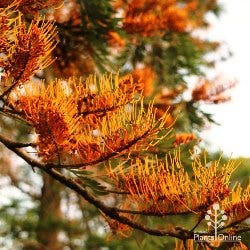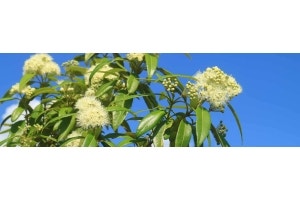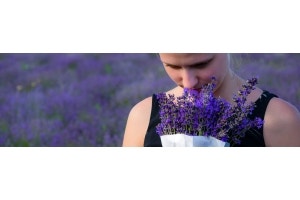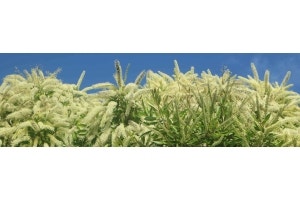
Grafting is the process of attaching the top part of one plant to the roots of another. It's a skilled technique. Let's find out more.
Enter grafting.

Why Graft?
Most plants grow on their own roots. Most of the plants we sell grow on their own roots. Plants have been doing this for millennia - it's how the majority of plants get water and nutrients from the soil up to the leaves. Because plants have been growing this way for millennia, they have become very specialised, in their own ways. The roots are accustomed to the soils they grow in, and have maximised their ability to get the most out of their growing situation. For some plants, that means that they only thrive easily in very specific circumstances.Enter grafting.
 Grafting - attaching the top growing part of a plant onto the roots and stem of another plant - allow the top plant to access the skills of the bottom plant's roots.
The join where the two plants meet eventually melds together and seals, with the internal cells of the two plants joining forces to work as one.
Grafting - attaching the top growing part of a plant onto the roots and stem of another plant - allow the top plant to access the skills of the bottom plant's roots.
The join where the two plants meet eventually melds together and seals, with the internal cells of the two plants joining forces to work as one.
The pairs of plants grafted together have to be chosen carefully, to avoid a fat plant on too skinny legs, or vice versa! You can see the graft join, or union, here in this photo of our Bush Lemons grevillea. The two plants are held together with a biodegradable horticultural tape that eventually breaks down and disappears, leaving a secure joint.

Grafting Benefits
Grafting is often done on rose bushes and grape vines and apple trees, to make them easier to grow commercially or in our own gardens; and so that so that specific varieties can be grown across the world in a range of soils.A vigorous apple is grafted onto a dwarf variety's roots, to create a fruiting bush small enough for suburban back yards. A weak and spindly but delicious apple is grafted onto a vigorous rootstock to create an apple that will thrive and produce more fruit.image: Virginia State Park cropped to size.
The photo here shows grafted apple varieties in commercial production. The grafted apple is flowering, ready to produce fruit later in the growing year.

Aside from helping with cultivation, grafting is done for ornamental reasons. Short and low plants are grafted onto the tops of tall rootstocks complete with their trunks.This creates a plant that looks like an umbrella or lollipop, and is a way of growing and displaying a trailing plant that would normally flow along the ground.
image: Apple and Pear Australia cropped to size.

Grevillea Grafting
Grafting of apple and grapes and trailing plants is generally done when they are bare rooted - out of the ground - and on stems that are generally between a pencil and a finger in width. Our grevilleas are tubestock size, planted up in pots, and the stems are only slightly fatter than a strand of spaghetti. Tricky!One slip of the knife and it could be goodbye grevillea...So we get our grevillea grafting done by a specialist grafting nursery close to us, that has staff skilled in this delicate procedure.image: Virginia State Park cropped to size.
 The grevillea plants are attached to the rootstock, which is usually in this case Grevillea robusta. This Grevillea species - as its name indicates - is robust and resilient, ideal as a root donor.
The grevillea plants are attached to the rootstock, which is usually in this case Grevillea robusta. This Grevillea species - as its name indicates - is robust and resilient, ideal as a root donor. It's fast-growing, and very adaptable (for a grevillea) as to where it will grow.This means that any grevillea grafted onto its roots, can use those roots to grow in a wider range of soils and climates than would be the case on its own roots.
 If you live in a region where the grevillea you want to grow also originates, then you probably have the advantage of having the kind of soil and climate that will help it thrive. You won't need a grafted grevillea, you can grow one on its own roots. That's most of our grevillea range.If, for example, you live on the humid east coast with rich loamy soil, and you want to grow a west coast variety that's found in sandy stony places, a grafted grevillea will help you have a better chance of gardening success.
If you live in a region where the grevillea you want to grow also originates, then you probably have the advantage of having the kind of soil and climate that will help it thrive. You won't need a grafted grevillea, you can grow one on its own roots. That's most of our grevillea range.If, for example, you live on the humid east coast with rich loamy soil, and you want to grow a west coast variety that's found in sandy stony places, a grafted grevillea will help you have a better chance of gardening success.
image: RachelMFry cropped to size.

Grafting Care
Because grafting is often done to give a delicate top plant a vigorous rootstock, that rootstock does its level best to grow. (Hard! As Tom Gleeson would say...) So you might see the occasional odd leaf appear below the grafting joint that looks a little different to the ones above. It's very obvious here in this grafted Grevillea intricata - you can see the fern-like robusta leaf emerge below the join.
 If this happens, all you need to do is snip the leaf off. (We've marked that with a white line.)That stops the roots having a method to photosynthesise and access light, and hands the control back to the grafted plant on top.
If this happens, all you need to do is snip the leaf off. (We've marked that with a white line.)That stops the roots having a method to photosynthesise and access light, and hands the control back to the grafted plant on top.



























